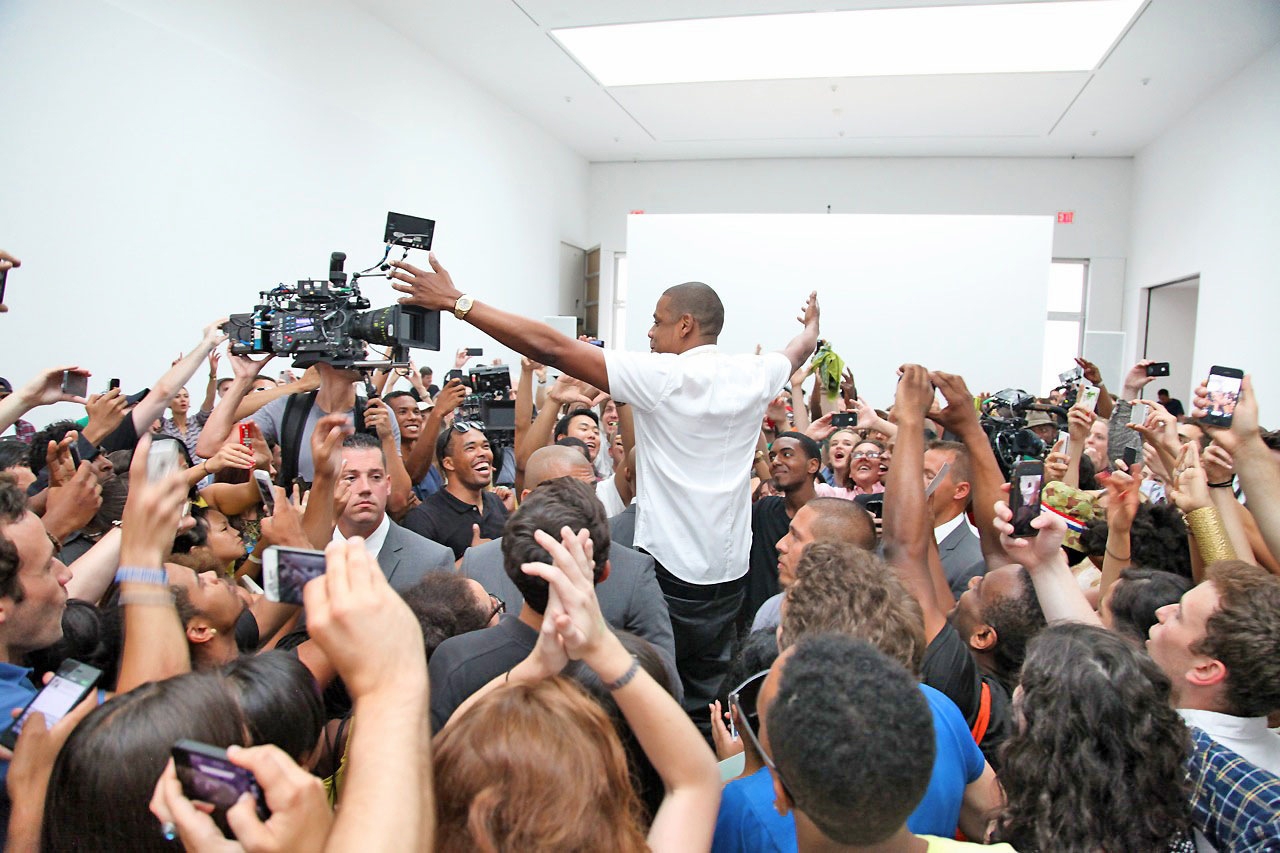Does the artworld have a celebrity problem? The new c-word has undoubtedly captured the attention of the gossips and scribblers. Everyone from friends (Christian Viveros-Fauné in Newsweek) to frenemies (Adam Lindemann in The New York Observer) has either whined and griped or shucked and grinned about those loveable cardboard cutouts from the entertainment industry getting all the airtime in the auction rooms and at the opening parties.
Celebrities increasingly appear to be the buyers and sellers for very expensive works of contemporary art
Whether it’s Franco – yes, the Franco that’s gracing the pages of this rag – or Leo – yes, the Leo whose charity auction broke multiple sales records – the stars that fill stadiums and screens increasingly appear to be (or are getting noticed as) the buyers and sellers of note for very expensive works of contemporary art.
But why is that a problem? Celebrities have money, and presumably a few have taste, or at least good advisers. For example, Jay Z, much in the news of late for his music-video- masquerading-as-performance-art-piece Picasso Baby, works with Jeanne Greenberg Rohatyn, who even the most cynical critics would have to accept as being something more than superficially knowledgeable about art. So the artworld’s newfound love and loathing of ‘the celebrity’ in its midst must have its roots in some other insecurity.
I remember seeing Keanu Reeves walking the halls of Art Basel Miami Beach back before 2008 and thinking, ‘Who knew?’ Of course I wondered what he might be buying. To a certain extent this is what being a celebrity is about today. Sociologist Frank Furedi writes that ‘what is distinctive about today’s celebrities is that they are promoted as both special and utterly ordinary’.
That ordinariness – pictures of celebs at the beach (‘he’s got thinning hair’), having lunch (‘she’s not vegan!’), buying groceries (‘Twinkies?’) – cultivates an artificial intimacy, a feeling that we know them in the way that we know people with whom we have regular daily contact.
But to understand how this works in the artworld we have to recognise that the artworld is not like other professional worlds; it’s one entirely bound up with the social existence of its members. Evenings, weekends, vacations – times that other professionals normally spend away from ‘work’ – is often the most essential time for artworld professionals to be at work. When Keanu (of course we’re on a first-name basis; he’s a celebrity!) is at ABMB, he’s on his own time, buying or browsing; he’s doing it, presumably, for himself and his own pleasure.
But I’m there working: writing, teaching, consulting, etc. Keanu’s personal world and my professional world overlap, and because he’s so familiar, because we’re on a first-name basis (although he doesn’t know this), I’d like to know what he’s seen that he likes, or doesn’t. Which dealers, in his opinion, have good work, or don’t.
I want to know this in the same way that I want to know it from friends or colleagues or acquaintances that I run into at the fair. I respect their opinions enough to want to give five minutes of my time to hear them out. I don’t take what they say as gospel. I take it as being of interest – potentially. It’s a low bar, but it’s a bar nevertheless. And Keanu hurdles it because, again, he’s familiar. We’re artificially intimate.
What exactly do I respect here, then? It’s a kind of authority, the kind that comes with a familiarity with the intelligence, or lack thereof, of others. I listen to friends and colleagues and acquaintances because, over time, I have taken the measure of their intelligence. I accept that they speak with a certain authority.
And when they speak, they don’t always do it directly to me. Sometimes I read what they write, or see what they paint or watch them on a stage in front of an audience, and I measure. This is why I can respect the authorial intelligence of someone I’ve never met (Furedi, for example), because the catalogue of deeds or words is great enough to grant them the respect that I can honestly and responsibly judge they deserve.
If the artworld has a problem, then, it’s not with the celebrities themselves but with what they represent: the confusion of familiarity with authority. We cede authority to what we feel we know, and we feel we know it because it’s ever-present to us, online, onscreen, in the checkout aisle, ‘in the air’. The contrarian economist Tyler Cowen, in his new book Average Is Over, says that the next boom industry will be ‘marketing’. Which is what? The business of getting more of our attention more of the time; in other words, of making things familiar. Is there any wonder why celebrities of all stripes play such outsize roles in the marketing business? Marketing is a means to manufacture authority.
When the big celebrities, the ones that are famous as much for being famous as for anything else, move into your neighbourhood and start playing a bigger role in your world, you don’t have a celebrity problem, you have an authority problem. Contemporary art today, on the whole, doesn’t know how to authorise itself. It doesn’t know what values it subscribes to or what good it is for. Absent of its own authority, art must look elsewhere to be taken seriously, and increasingly it appears it wants to be nothing more than familiar.
This article was first published in the November 2013 issue.
